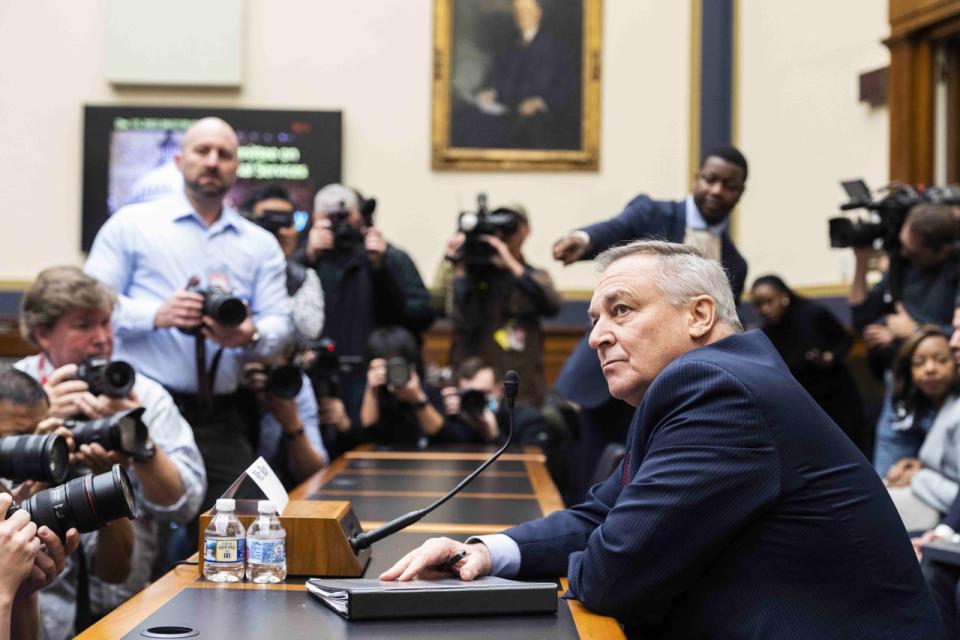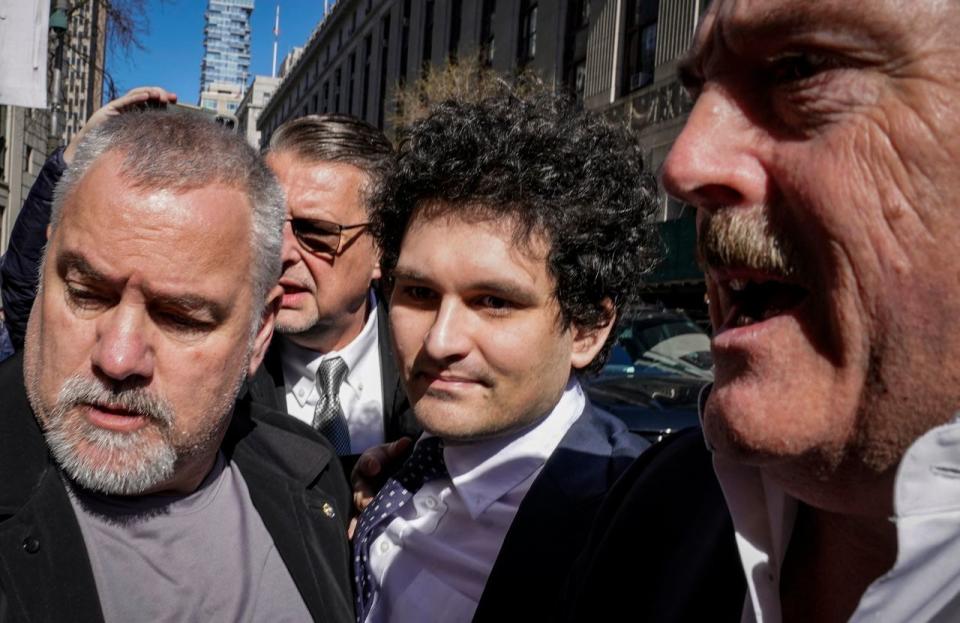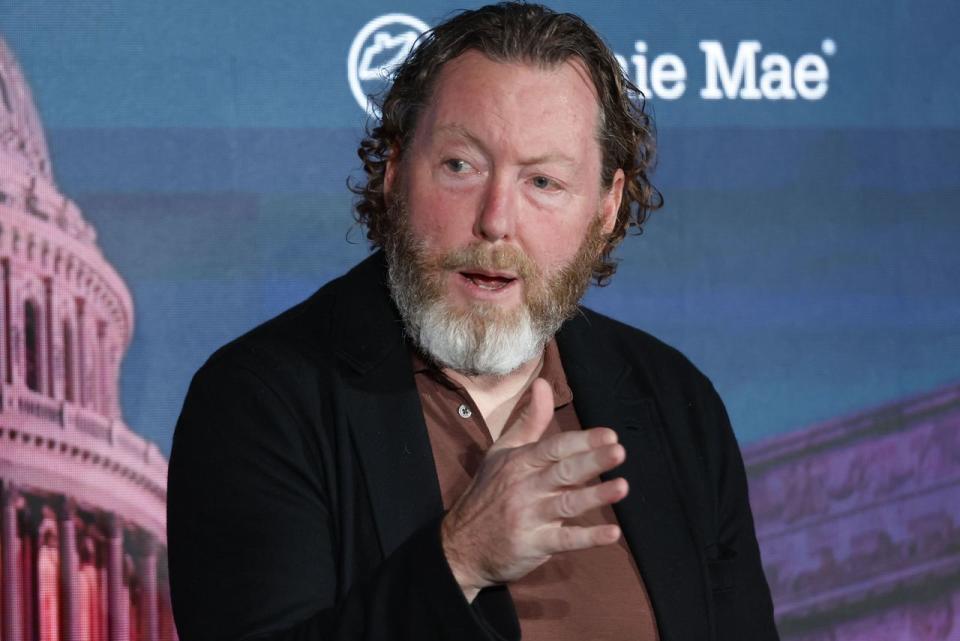The Crypto Reboot That Wasn’t: Why ‘FTX 2.0’ Floundered
The lawyers and advisers running FTX’s bankruptcy spent more than half a year and millions of dollars in fees to explore the idea of restarting Sam Bankman-Fried’s failed cryptocurrency exchange. In the end, they decided it wasn’t worth it.
Most Read from The Wall Street Journal
Disney Succumbs to Ron DeSantis in Fight Over Florida Tax District
EV Home Charging: I Did the Math—and Saved Hundreds of Dollars
Apple Turns to Longtime Steve Jobs Disciple to Defend Its ‘Walled Garden’
The Fight for AI Talent: Pay Million-Dollar Packages and Buy Whole Teams
Baltimore Bridge Crash Investigators to Examine Whether Dirty Fuel Played Role in Accident
To outside observers, it might seem far-fetched that FTX could be revived after it collapsed with an $8 billion hole in its balance sheet and its top executives were charged with fraud. But the idea of rebooting the exchange in some form—dubbed FTX 2.0—won support among major creditors. Dozens of prospective buyers expressed interest.
As crypto prices rallied late last year, however, the billions of dollars of crypto still under FTX’s control jumped in value, and it became feasible for the company to repay its customers more or less in full. By returning 100 cents on the dollar, the management team steering FTX through bankruptcy could declare its job done, with no need to restart the exchange.
Some creditors say the bankruptcy estate missed an opportunity to create a valuable business from the ashes of FTX, formerly one of the world’s most popular crypto exchanges.
“They are responsible for destroying billions of dollars in value,” said Arush Sehgal, an FTX creditor who briefly consulted for Proof Group, one of the prospective buyers. “They had a thriving business that was the No. 2 exchange in the world, and all they had to do was turn it back on. But they failed to do so.”
Former customers complain that they aren’t really being made whole because they are set to get back only the cash value of their crypto as of November 2022, when FTX filed for bankruptcy. Bitcoin has more than tripled in value since then and is trading around $70,000, near record levels. Proponents of an FTX restart say customers should get shares in a rebooted exchange to help compensate them for that lost opportunity.

FTX Chief Executive John J. Ray III, who has led FTX since it filed for bankruptcy protection, said his team led an exhaustive effort to find buyers or merger partners for the exchange—but the proposals that came in weren’t good enough.
“In each case, no serious investor was willing to give us material value when weighed against costs, delays and other factors,” Ray told The Wall Street Journal in a statement. “We did not even receive a meaningful bid for any intellectual property because the code was obsolete and the brand synonymous with fraud.”
Bankman-Fried, who is set to be sentenced Thursday, was convicted on seven counts of fraud and conspiracy. Prosecutors have asked the judge to sentence him to 40 to 50 years in prison for his role in FTX’s implosion, which prosecutors have called one of the largest financial frauds in U.S. history.
To unpack what happened to FTX 2.0, the Journal interviewed bidders vying to restart the crypto exchange, creditors involved in the process and FTX’s post-chapter 11 management team.
Early on, it seemed unlikely that FTX customers could receive anything close to a full recovery of their claims. Ray first floated the idea of a restart in January 2023. “If there is a path forward on that, then we will not only explore that, we’ll do it,” he told the Journal at the time.
A restructuring veteran known for overseeing Enron’s bankruptcy, Ray had no crypto experience before taking over FTX. He privately expressed doubts about the feasibility of a restart during the spring and summer of 2023. He was concerned about receiving regulatory approval for a relaunch of FTX and expressed doubt about the overall purpose of cryptocurrencies.

Still, FTX began to look for buyers in May. Behind the scenes, the unsecured creditors’ committee pushed for the restart. Such committees are common in bankruptcies and are intended to ensure creditors’ views are represented. With FTX, the committee consisted largely of crypto firms, such as algorithmic trading firm Wintermute Asia.
Friction emerged between the committee and the bankruptcy estate. Some creditors privately accused Ray’s team of fumbling crypto transactions and moving too slowly on FTX 2.0.
The bankruptcy estate denied having disagreements with the committee over the 2.0 process.
By September, FTX said more than 75 potential bidders had indicated interest. Three main suitors eventually emerged: Bullish, a crypto exchange led by former New York Stock Exchange President Tom Farley; fintech startup Figure; and Proof, a Silicon Valley investment firm.
Bidders were primarily focused on attracting FTX’s former customers to their own exchanges. Some hoped to become a distribution channel for digital assets that the customers might get at the end of the bankruptcy process—a strong incentive to get old FTX customers on to their own platforms. Before its collapse, FTX had more than one million users, including “whales” who are among a crypto exchange’s biggest customers, akin to high-rollers at a casino.

Bullish came to be seen as the leading contender. Farley’s firm offered to pay with its own shares, offering a stake of about 15% of Bullish to be distributed to FTX customers, with a formula that increased the payout if Bullish hit certain targets. Bullish also sought to attract FTX customers by starting a market for digital tokens representing their bankruptcy claims.
Bullish’s proposed deal for FTX fell apart in December. Ray’s team was disappointed that the FTX 2.0 bids were largely based on slices of potential future revenue, rather than cash or other tangible assets. Ray’s team also felt it would be unfair to effectively force FTX customers to sign up for a new exchange. Meanwhile, the creditors’ committee came around to the view that it wasn’t worth the time and expense to finalize a complex deal.
Andrew Dietderich, a lawyer for FTX, revealed that reboot efforts had stalled at a Jan. 31 court hearing. “The costs and risks of creating a viable exchange from what Mr. Bankman-Fried left in the dumpster were simply too high,” he said.
Days later, Figure CEO Mike Cagney publicly posted details of his bid on X. He proposed to combine FTX’s customer list with a new exchange that Figure planned to launch, to be part-owned by FTX creditors. The “proposal is worth $billions to FTX creditors and establishes an owner-community day one for our exchange,” he tweeted.
Ray remains unconvinced. “The fairest thing we can do is prioritize returning as much cash as we can to victims, so they can decide what to do with it themselves,” he said.
Write to Alexander Osipovich at alexo@wsj.com and Alexander Saeedy at alexander.saeedy@wsj.com
